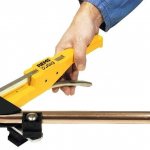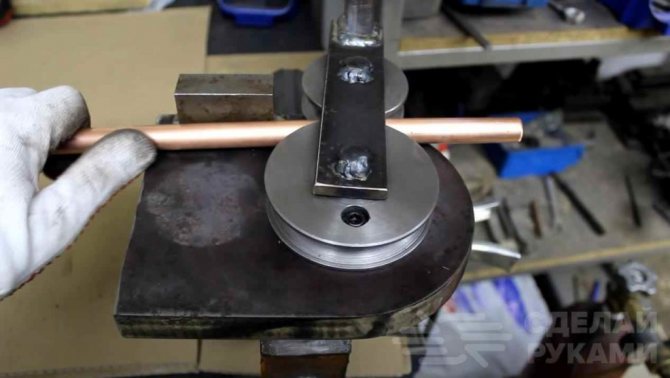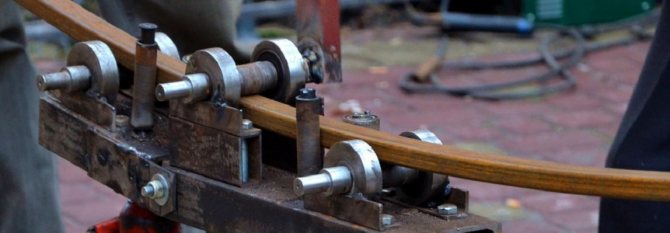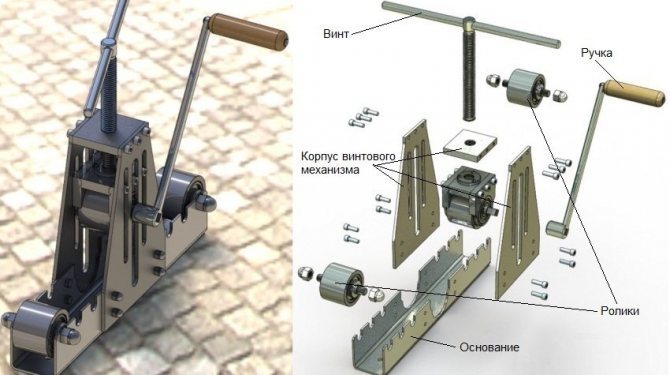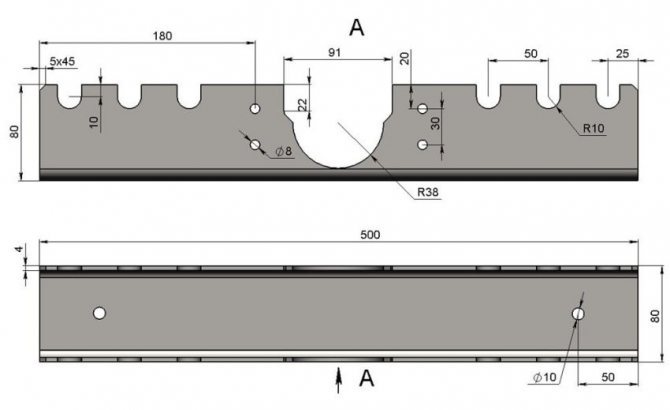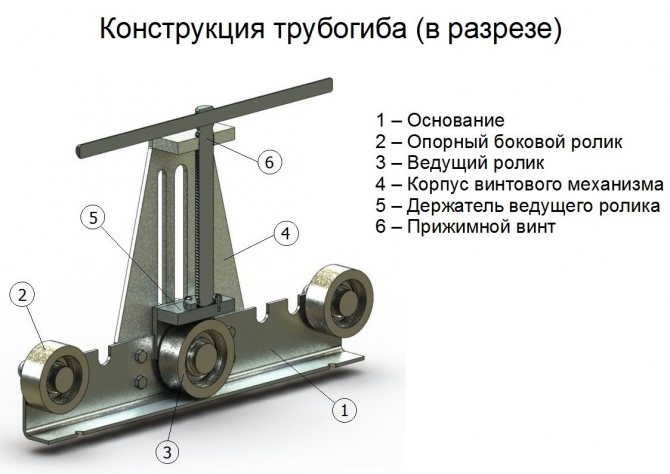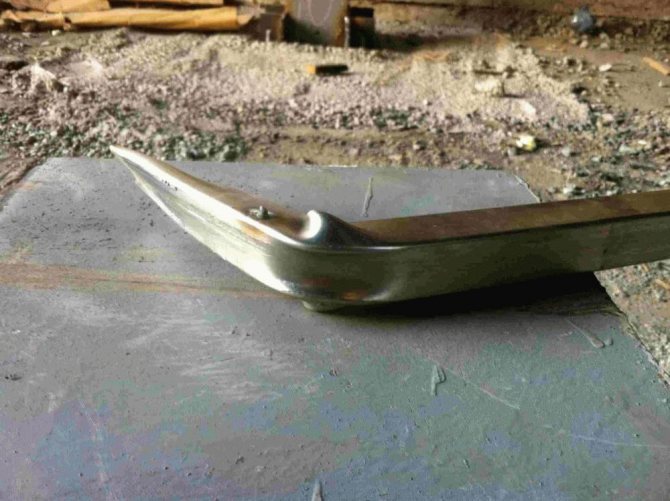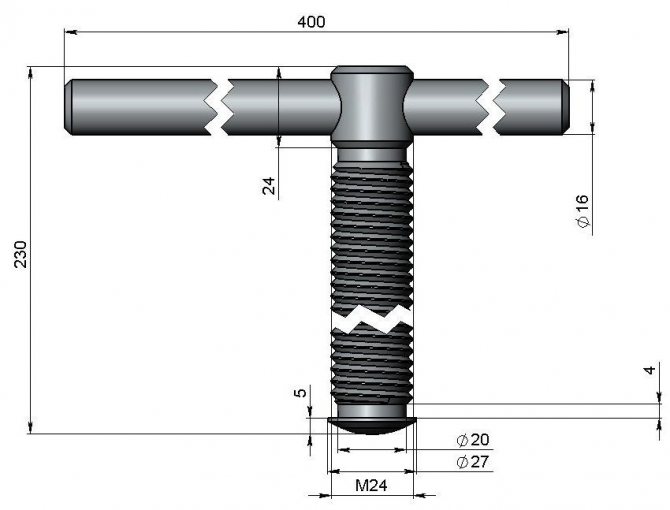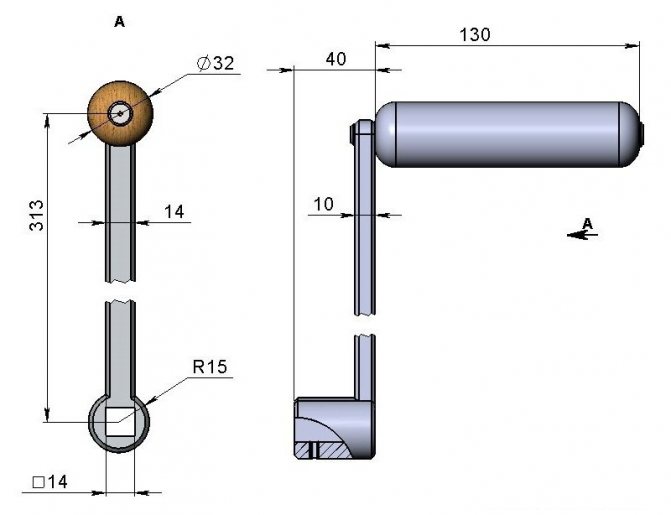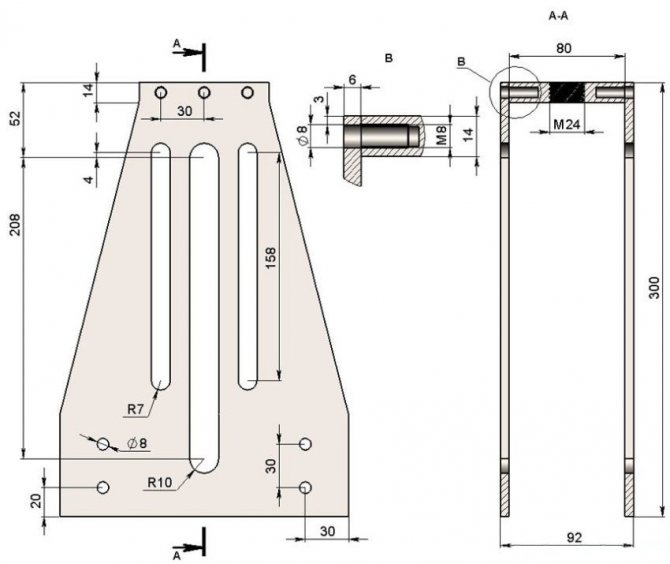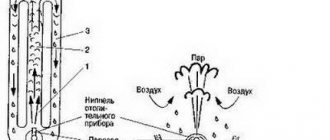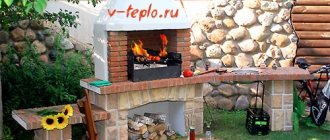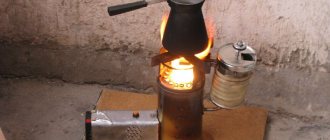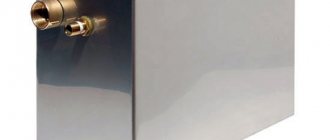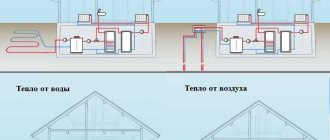Anyone who loves to independently make various products and structures, often faces the need to bend a profile pipe into an arc. It is impossible to do this smoothly and accurately without special devices, so there is a need to make a pipe bender for a profile pipe with your own hands. Craftsmen have invented a lot of designs for this device. Many of them are quite possible to do on your own. Moreover, they do not require large funds and are easy to manufacture and use.
A pipe bender is a device with which you can bend a pipe at the desired angle.
Basic information about pipe benders
Before starting a story about the options and methods for making pipe benders, you need to decide what it is and what it is used for. So a pipe bender is a manual device or a stationary machine that allows you to bend a pipe made of any material at an arbitrary angle.
The pipe can be steel, copper, aluminum or plastic with a diameter of 5 to 1220 mm or profile with any section. Bend angle from 0 to 180 degrees. This article brings to your attention the manufacturing technology of several types of this uncomplicated device, having studied which, in a few hours you can make any copy you like.
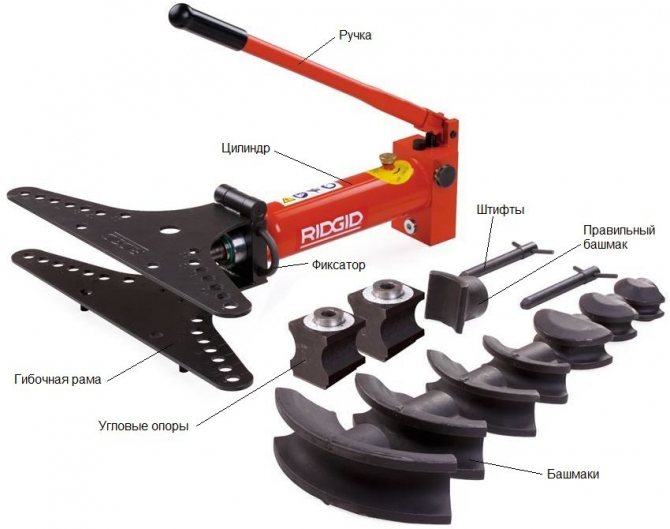
Pipe bender device with shoes for various pipe bending angles
What are the types of pipe benders
If we are talking about industrial devices, then they are divided into several types according to the method of implementing the drive, as well as the type of bending.
Drive type classification
There are machines: hydraulic, electromechanical and manual. Hydraulic-driven machines are manual and stationary. They are powerful enough to bend pipes even 3-inch diameter. Hydraulic pipe benders are used in professional activities in specialized industries and are capable of performing a very large amount of work.
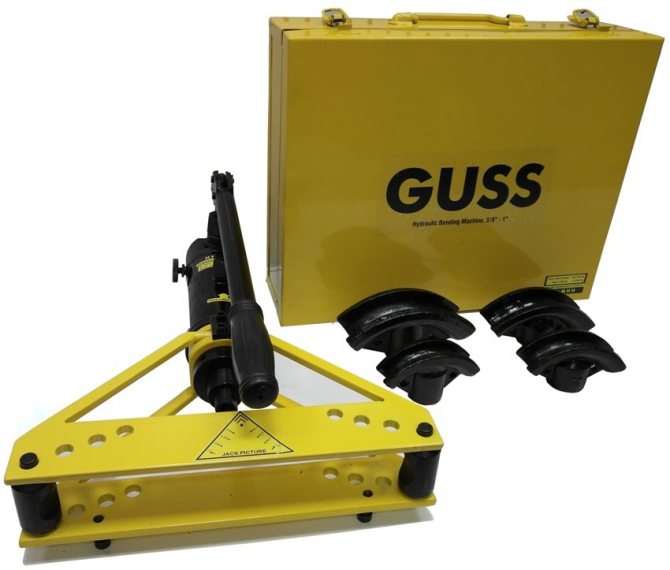

Hydraulic pipe bender for bending water and gas pipes up to 90 °
Electromechanical devices can be used to bend almost any pipe, even with very thin walls, which is beyond the power of hydraulics. After all, electronics allows you to very accurately calculate the force and bending angle, which prevents the material from breaking. Pipes bent by such devices do not show the slightest signs of deformation.


Electromechanical pipe bender for PEX / AL / PEX pipes and bending angles up to 180 °
Manual pipe benders are used only for bending small diameter pipes made of polymers, stainless steel or non-ferrous metals. They work mainly from the mains. They are easy to use and do not require a lot of physical strength to work. It is quite possible to make such pipe benders for a profile pipe with your own hands.
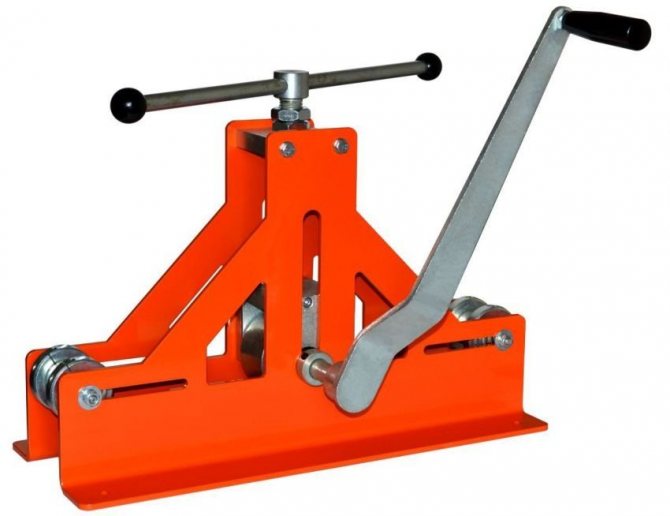

Hand tool for bending rectangular profiles and steel pipes
Classification by pipe bending method
You can bend a pipe using the device in various ways. Depending on this, the following types of pipe benders can be distinguished: crossbow, spring, segmental, mandrel.
Crossbow devices are equipped with a special shape, which is a bending element. It is designed for one pipe diameter or cross-section. To bend a pipe of a different diameter, the mold must be replaced. The spring devices are equipped with elastic springs that allow plastic pipes to be bent without deformation. Segmented ones are equipped with a special segment that pulls the pipe around itself, bending it at the desired angle.


The principle of bending a profile pipe using a homemade tool
It should be understood that the method and value of the bending angle of the pipe depends on its characteristics. There is even such a value as the minimum bend radius, with a further decrease in which the pipe deforms or simply breaks. This indicator depends on the wall thickness, material and section of the pipe.


One of the options for using a bent profile is arranging a greenhouse
How to make the simplest manual pipe bender for a profile pipe with your own hands
Now let's look at some homemade pipe benders. The simplest option provides for the possibility of bending the pipe by means of a template to a given radius. This technology is also quite suitable for bending steel pipes, not just aluminum ones. The template is simply cut out of boards, the thickness of which is slightly greater than the diameter or section of the pipe that needs to be bent.
These boards are securely fastened to each other so that the pipe cannot jump out of them during the bending process. To form a gutter, the boards to be fastened are simply cut at a slope for a round pipe. Then, the finished wooden template is attached to a table or other similar base. Next to the template, a stop is attached to fix the pipe.
A do-it-yourself pipe bender for a profile pipe of this type is able to bend even thick-walled pipes if you use a winch. If the pipe is profiled, then the bevels are not made when cutting the boards. Instead, the pipe is secured with multiple stops.


A drawing with dimensions for making a pipe bender with your own hands
Using wood, you can even build a rolling pipe bender if you grind wooden rollers. They can also be made from bearings or polyurethane. In general, the complexity of making homemade pipe benders in a certain way depends on the flexibility of the pipe. Pliable options can be bent on wooden fixtures without much difficulty just by hand, but for rigid pipes, more complex devices with metal parts will be needed.
Output
From this article, you learned how to make a pipe bender with your own hands for a standard pipe and a profile one. They talked about three design options that you can make yourself for little money. The choice of each of them depends, first of all, on the diameter of the workpiece and its quantity, in addition, the availability of raw materials plays an important role in this.
The video in this article will help you find additional information on this topic.
Did you like the article? Subscribe to our channel Yandex.Zen
Making a homemade hydraulic pipe bender
If you decide to make a real hydraulic pipe bender, you need to get a hydraulic jack, channel, two rollers and a shoe. In addition, you will need several metal plates of steel over 3 mm thick.


Scheme and principle of operation of a homemade hydraulic pipe bender using a jack
A rectangular structure is created from the channel using a welding machine, the height of which coincides with the height of the fully extended jack. It is installed on a rigid base and securely fixed with metal plates.
The jack must be selected with a lifting capacity of at least 5 tons. It is designed to act as a pusher. The main task here is to find the most suitable videos. The difficulty is that only with the most accurate rolls around the pipe can a really high-quality bend be obtained. If you find different rollers and make them removable, you can bend pipes of different cross-sections and diameters.
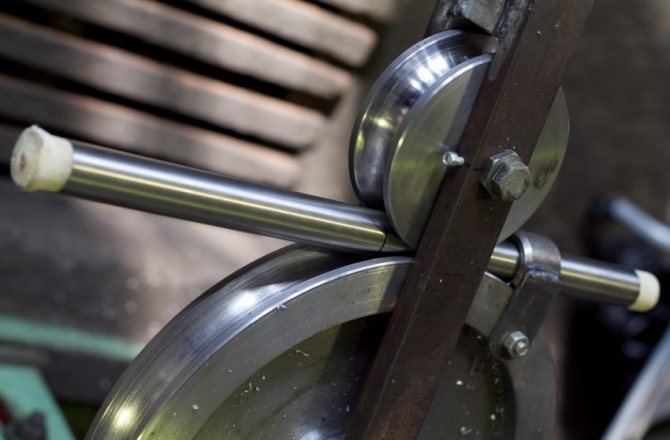

Example of a DIY bending device for metal pipes
The advantages of a hydraulic do-it-yourself pipe bender for a profile pipe are: ease of manufacture, availability and low cost of the jack and parts. Such a device allows you to bend any shaped and round pipes in a cold state with high quality.
Main structural elements


Principle of operation
For the manufacture of a particular machine design, you should look at several diagrams in order to determine the set of parts. The fact is that, if necessary, all the components of the nodes can be purchased for money, but you can also use the materials that are in your household and not pay anything for it. In most cases, home craftsmen stop at frontal structures and for this you must have:
- three metal rollers (rollers);
- chain for the drive;
- axis of rotation;
- mechanism for the drive;
- metal profiles (channels) for the frame.
Sometimes, in the absence of metal rollers, they are replaced with wooden or polyurethane ones, but ... Such a rolling mechanism will not withstand prolonged load, that is, the machine will serve its purpose, but not for long. Is there any point in wasting your labor for a short-term benefit if, with an effort or even paying a certain amount, you can find steel rollers?


Diagram of a simple pipe bender with dimensions in mm
As you understand, the process of deformation of the profile occurs using rolling, that is, the pipe is rolled along rollers (rollers), which eliminates fracture and cracking. For rolling (bending) the profile, it is inserted into the rolling line (between the rollers) and pressed from above with a screw device or jack to the desired bending radius. Then, when you turn the feed knob, the pipe moves and the bend goes along its entire length. It turns out that this is a manual drive, which is set in motion by muscular force, but at home such a mechanism is very convenient.


The profile is clamped with a jack
To assemble a simple do-it-yourself pipe bender in question, you will need:
- jack (preferably rack and pinion);
- metal profiles with a shelf for horizontal and vertical frames;
- alloy steel springs (they are distinguished by high strength);
- three steel shafts with bearings;
- chain for a drive (can be from a bicycle or moped);
- gears (leading and driven);
- thick fittings for axles and drive handle.
Video: the process of working on bending a pipe
As you can see, making a do-it-yourself profile bending machine is easier according to the available drawings, and photo and video materials only help with this. The bend shown in the picture is driven by a handle that rotates a shaft with a drive gear. With the help of a chain, rotation is transmitted to the shaft with a driven gear, and the third shaft presses the profile from above to the required bending angle. Everything is very simple.
Mechanism manufacturing process


Bending device drawings
If you are interested in how to make a profile bending, then you will have to perform a number of actions that will ensure this reliability of the mechanism, and these are:
- production of a powerful frame assembled by welding and bolted ties;
- according to the terms of the drawing (technical assignment), make and install the axes of rotation for the rollers. There are three of them - two rolling and one clamping;
- to rotate the rolling rollers, you need to provide a chain drive, that is, weld (evenly) the drive and driven gears;
- weld the handle for rotation onto the drive gear.
Manufacturing nuances


Finished pipe bender
If you have all the necessary parts in stock, then it is not difficult to make a mechanism for profile bending. First of all, you need to take into account that all rollers must rotate on bearings - the accuracy of rotation will ensure correct rolling, without failures and kinks. The drive and driven gears must be correctly centered - a failure from the center by at least 0.5 mm will lead to incorrect deformation (the bending will turn out to be uneven).
The pressure shaft must also be centered - the accuracy of the bending angle depends on this. Best of all, when the dimensions of all three shafts are the same - the rolling is the most accurate. The accuracy of the rolling also depends on the hardness of the clamp, so the shaft must be well fixed.
How to make a rolling pipe bender yourself
The pipe bending process in a rolling mill is as follows. The pipe is laid on side rollers, and a third one is lowered onto it from above, fixing the product in a given position. When we begin to rotate the handle, the chain drives the shafts in rotational motion, and the profile or round pipe is bent at the required angle.
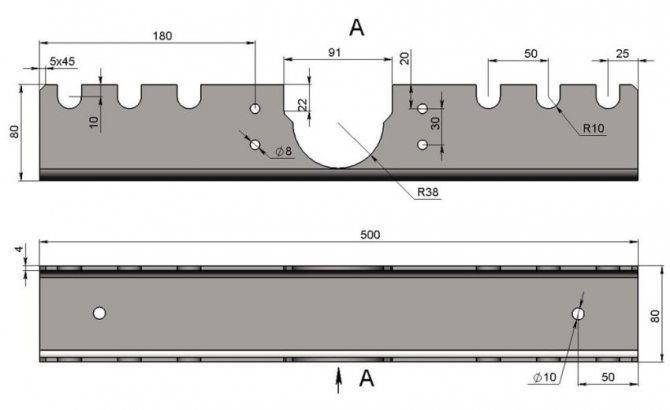

Step 1: creating the base of the pipe bender from a steel channel 80x80x4
To manufacture such a device, you must:
- grind rollers and bearing races. This task can be entrusted to a turner who, according to the drawings, will do the job in the best possible way. The device will have three shafts, one of which is suspended by springs, and the other two are fixed in the sides of the frame;
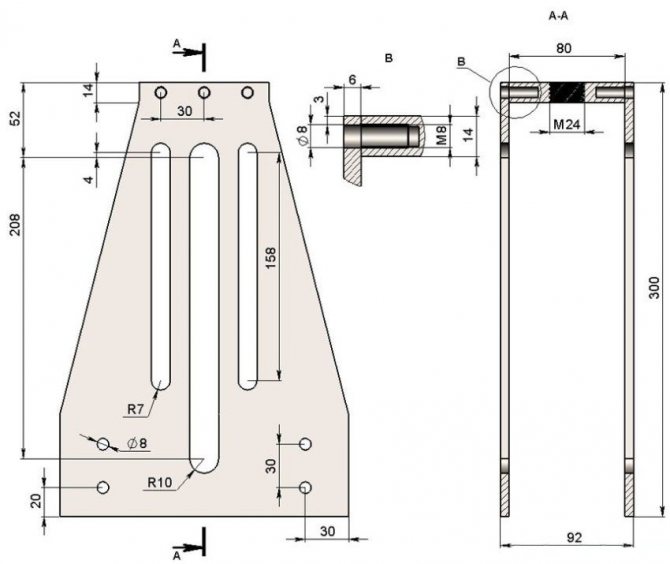

Step 2: making the screw housing
- prepare a shelf from a 50 mm channel. It looks like a rectangle with sides 100x30 cm. Holes are made in it for mounting the shafts and a thread is cut to adjust the position of the pressure shaft;


Step 3: create a standard threaded screw
- fasten all the parts together with a welding machine;
- the shelf with the pressure shaft is suspended by springs, and the side shafts are connected through sprockets with a chain. A handle for rotation is welded onto one of the shafts;
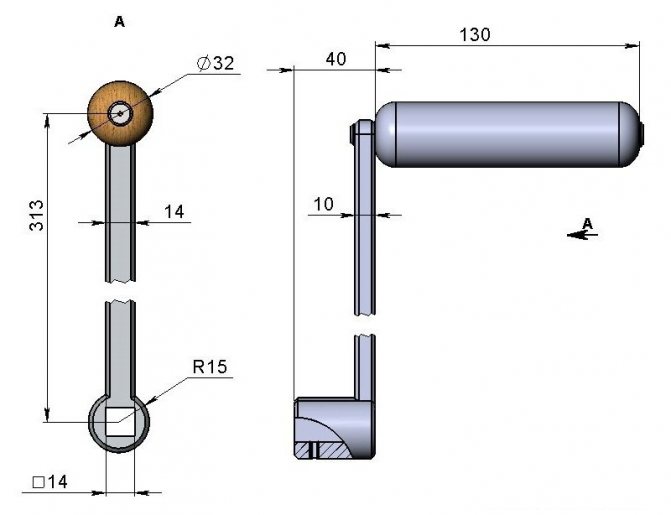

Step 4: making the center drive roller pivot handle
- mount the jack so that it can be used to easily adjust the downforce.


Step 5: assembling all the parts of the homemade rolling tube bender
A pipe bender for a profile pipe with your own hands can be made. Its complexity depends on the purpose for which you need it. If these are only one-time actions, then wooden structures are enough. If you are engaged in the manufacture of products from a pipe on an ongoing basis, then you will need a more complex unit.
DIY pipe bending tools
Since it is possible to make a home-made device for bending pipes both from improvised and used components, the cost of such a tool will be quite low (for more details: "How to make a homemade pipe bender - the best ways"). Moreover, for the manufacture of the simplest pipe benders for a round pipe with your own hands, drawings are not required. For example, consider a fairly simple design of this device.
The basis for it will be a concrete slab, in which holes were pre-drilled, and metal pins, 1 ″ in diameter, were driven into them. These elements must be placed with a distance of no more than 50 cm from each other.
